Welcome to the PerGeos Use Case Gallery
Below you will find a collection of use cases using PerGeos Software. Based on the technology of its predecessor Avizo Software, PerGeos is a robust software platform for visualizing, processing, and analyzing 2D and 3D digital rock image data.
These use cases include scientific publications, articles, papers, posters, presentations or even videos that show how PerGeos is used to address various scientific and industrial research topics.

Knowledge of shale pore structure characteristics is crucial to understand gas
storage and seepage mechanisms. Organic matter (OM) pores are considered
the most important pore type in shale, and one of the currently significant
research questions focuses on the spatial distribution and connectivity of OM
pores. To answer this question, typical OM‐rich siliceous shale samples from
the Lower Silurian Longmaxi Formation were comprehensively investigated
usin... Read more
Hui D, Zhang Y, Hu Y, et al.
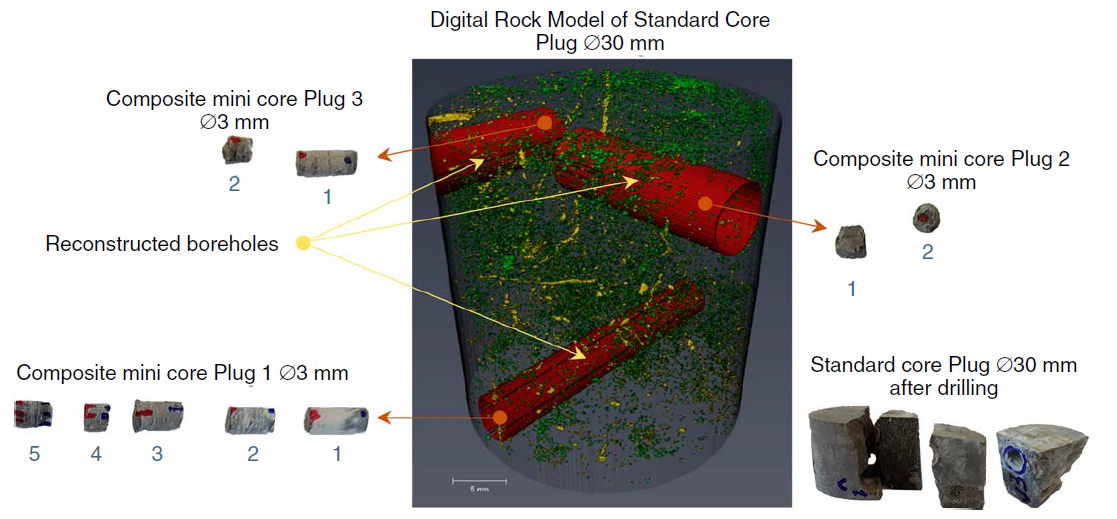
The task of reliable characterization of complex reservoirs is tightly coupled to studying their microstructure at a variety of scales, which requires a departure from traditional petrophysical approaches and delving into the world of nanoscale. A promising method of representatively retaining a large volume of a rock sample while achieving nanoscale resolution is based on multiscale digital rock technology. The smallest scale of this approach is often realized in the form of working with sev... Read more
Andrey Kazak - Svyatoslav Chugunov - Anatolii Chashkov
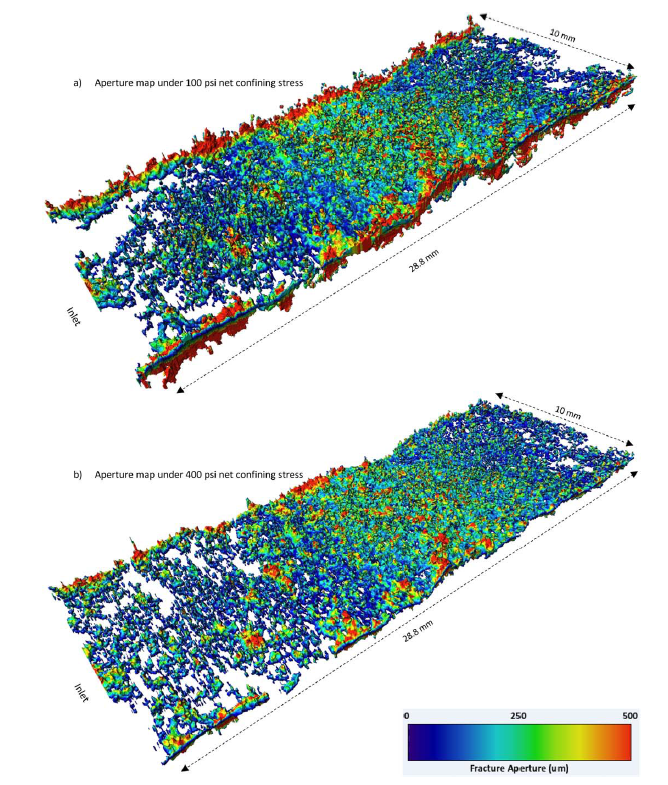
Pore‐Scale Experimental Investigation of Two‐Phase Flow Through Fractured Porous Media
Understanding transport mechanisms that govern two-phase flow in fractured porous media has direct implications for natural and industrial processes such as extraction of hydrocarbons from fractured reservoirs, geologic sequestration of CO2, or fluid flow through aquifers.
We present the results of a systematic pore‐scale experimental investigation of two‐phase oil/brine flow through a miniature water‐wet, fractured sandstone core sample. X‐ray microtomography is employed to ge... Read more
M. Arshadi, M. Khishvand, A. Aghaei, M. Piri, G. A. Al‐Muntasheri
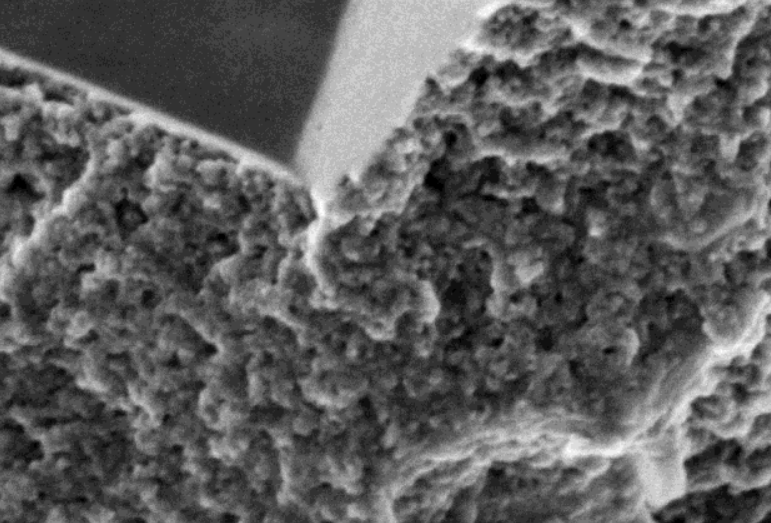
Optimization of production from shale reservoirs requires understanding of rock properties over a range of scales.
Multiple imaging techniques can be combined to determine the nature, connectivity, and wettability of nano-scale pore systems as well as the underlying mineralogy and organic textures that control reservoir behavior and the propensity of the matrix to fail and to contain expulsion cracks. The current study demonstrates new capabilities in integrated multiscale and time-res... Read more
Andrew Fogden, Alession Arena, Christopher Zhang, Ryan T. Armstrong
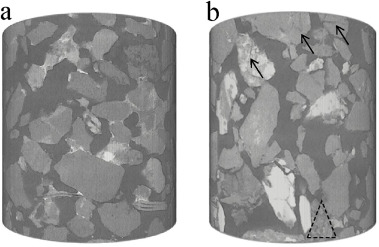
This study investigated the influence of compaction on the variation mechanism of petrophysical properties and the relative permeability of unconsolidated sandstone.
Firstly, triaxial mechanical experiments, CT scans, and mercury injection experiments were performed to analyze the microstructural characteristics and the macroscopic mechanism of changes in the petrophysical characteristics under different pressure. Secondly, a modified permeability test approach was adopted on reservoir... Read more
Yu Xiong, Hongguang Xu, Yongqing Wang, Wensheng Zhou, Ling Wang, Kai Feng
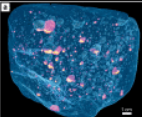
X-ray computed tomography of planetary materials: A primer and review of recent studies
X-ray computed tomography (XCT) is a powerful 3D imaging technique that has been used to investigate meteorites, mission-returned samples, and other planetary materials of all scales from dust particles to large rocks.
With this technique, a 3D volume representing the X-ray attenuation (which is sensitive to composition and density) of the materials within an object is produced, allowing various components and textures to be observed and quantified. As with any analytical technique, a ... Read more
Romy D. Hanna, Richard A. Ketcham
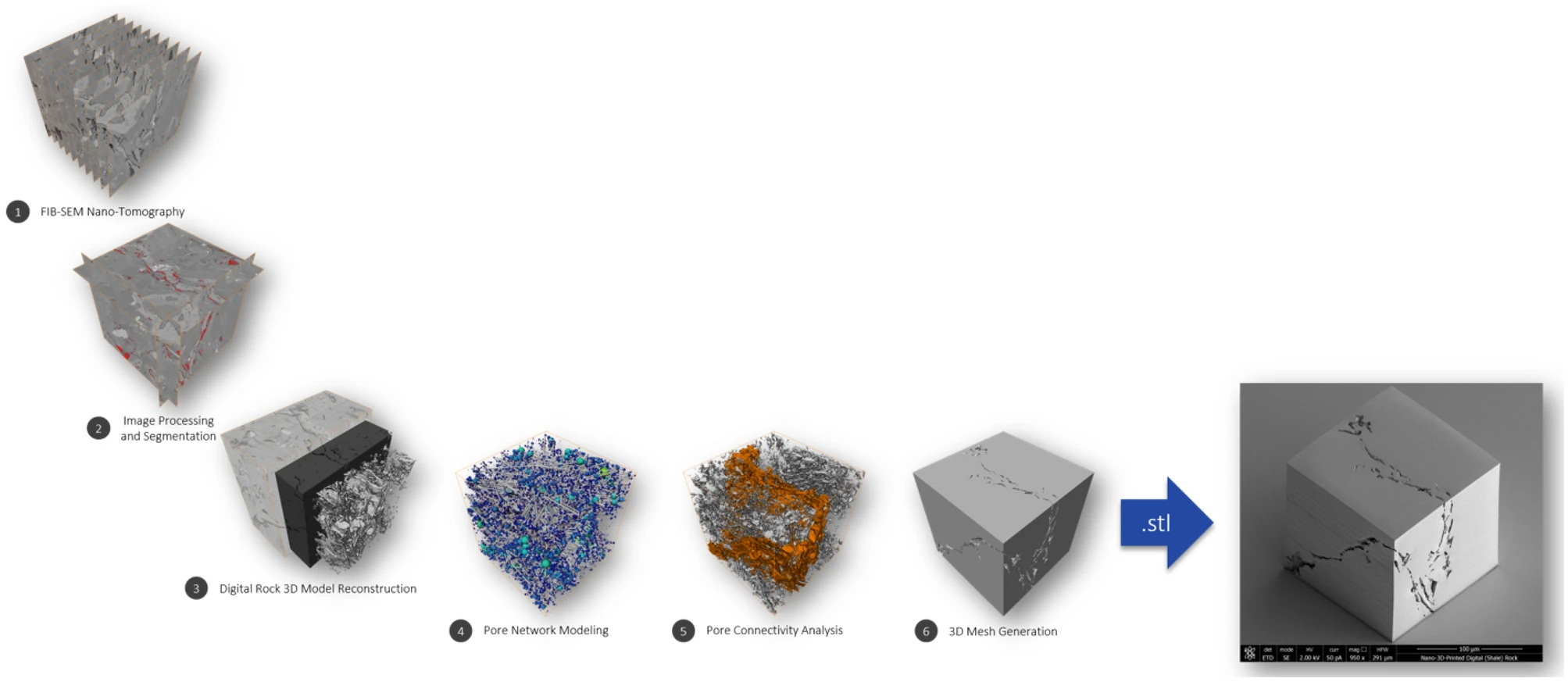
Advances in imaging have made it possible to view nanometer and sub-nanometer structures that are either synthesized or that occur naturally. It is believed that fluid dynamic and thermodynamic behavior differ significantly at these scales from the bulk. From a materials perspective, it is important to be able to create complex structures at the nanometer scale, reproducibly, so that the fluid behavior may be studied. New advances in nanoscale-resolution 3D-printing offer opportunities to ach... Read more
Jan Goral & Milind Deo
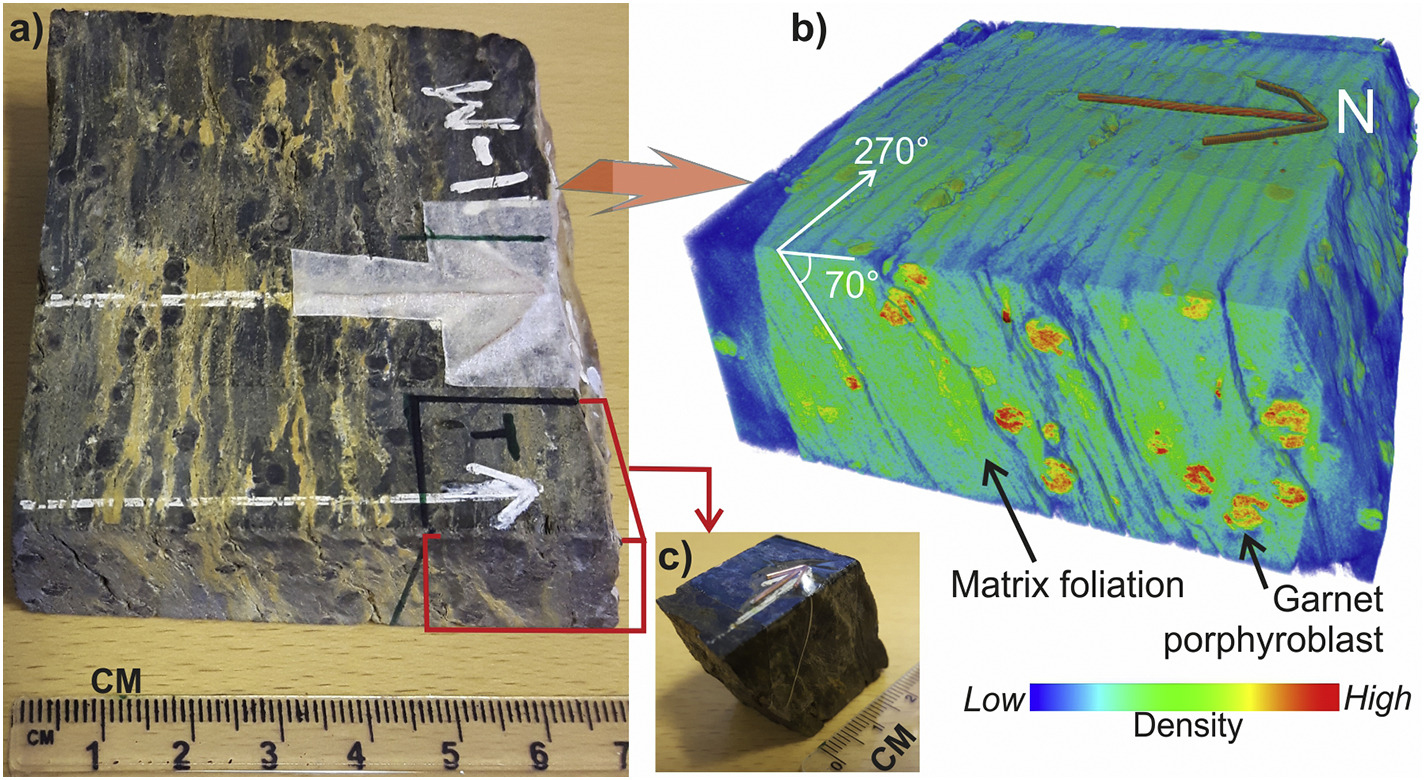
- Virtual petrography, 3D textures and quantitative analysis of spiral garnets.
- Micro-fold axis determination in spiral garnets using X-ray computed tomography.
- 3D spiral patterns unlock the tectonic history of the Karakoram Himalaya.
Spiral garnet porphyroblasts are known to record lengthy periods of deformation and metamorphism by preserving single or multiple FIAs (Foliation Intersection Axis) formed normal to tectonic shortening directions. Thanks to te... Read more
M.Sayab, D.Aerden, J.Kuva, W.U.Hassan
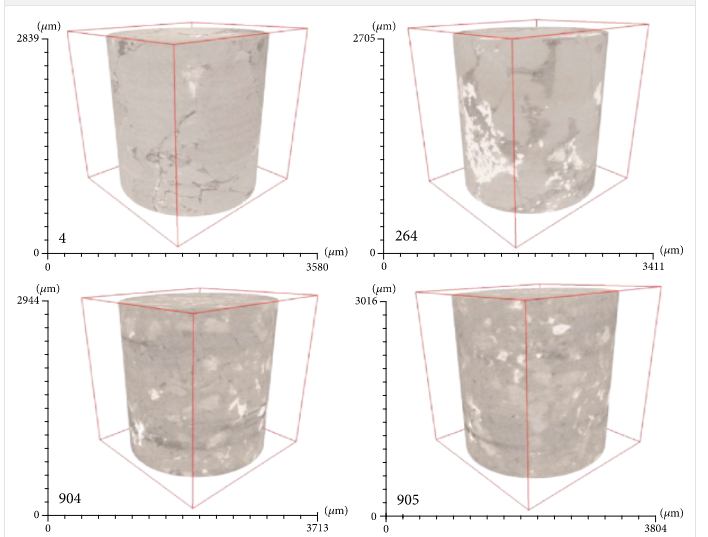
Technological advances and energy demands have made tight sandstone reservoirs worth to be exploited. Tight reservoirs are characterized by low porosity and permeability and strong heterogeneity, especially considering the extensive development of nanometer-scale pore throats or the wide-ranging PSD. Previous studies reveal that the PSD and pore-throat structure have a more direct effect on the storage and transport performance of tight sandstone reservoirs than porosity and permeability. Dif... Read more
Qiang Lei, Liehui Zhang, Hongming Tang, Yulong Zhao, Man Chen, and Chunyu Xie
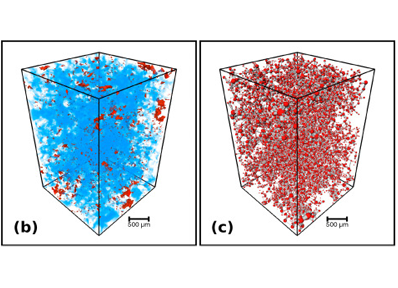
Pore network analysis of Brae Formation sandstone, North Sea
Generating an accurate reservoir model is of critical importance in forecasting the lifespan of hydrocarbon reservoirs and estimating the efficiency of carbon capture and sequestration. One critical parameter controlling the flow of fluids within subsurface reservoirs is the fraction of effective or connected pore spaces in the reservoir. […]
To quantify the connectivity of the pore space, it is therefore necessary to combine high resolution visualization of pore spaces with bulk... Read more
Paul-Ross Thomson; Mark Jefferd; Brett L. Clark; Domenico Chiarella; Tom Mitchell; Saswata Hier-Majumder
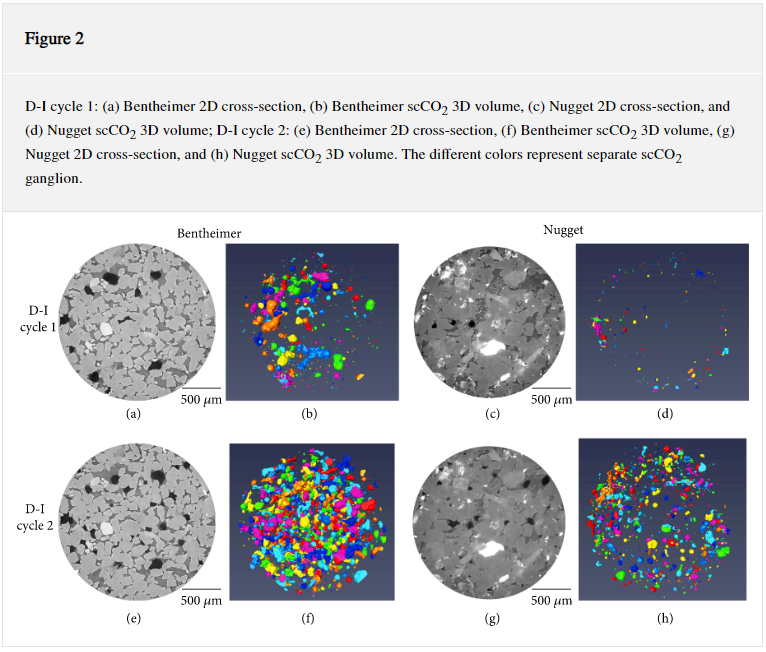
During a Geologic Carbon Storage process, supercritical CO2 (scCO2) is subjected to a series of dynamic and static conditions where the relationship between pore geometry and the trapped scCO2 curvature remains to be established. To mimic the dynamic process, two sandstones, Bentheimer and Nugget, were subjected to two successive drainage and imbibition (D-I) cycles and X-ray computed tomography scanned at each residual state to capture the wettability evolu... Read more
Laura E. Dalton, Dustin Crandall, Angela Goodman
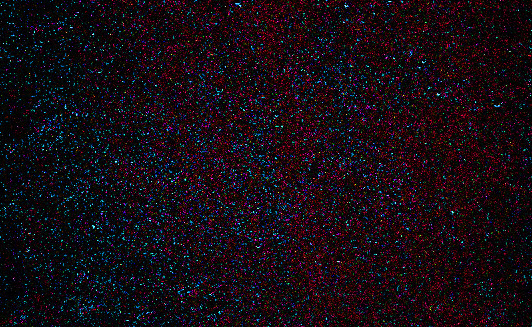
Major advance in well bore analysis with CT inspection
Premier, COREX has been providing core analytical services to the oil and gas industry for more than 30 years. Within the last decade it has augmented its rock core investigations by sending samples for analysis approximately every week to Nikon Metrology’s centre of excellence for micro-focus computed tomography (micro-CT) in Tring, Hertfordshire.
Drilling for oil or gas is an expensive business, whether offshore or on land, so it is essential for E&P (exploration and producti... Read more
Nikon
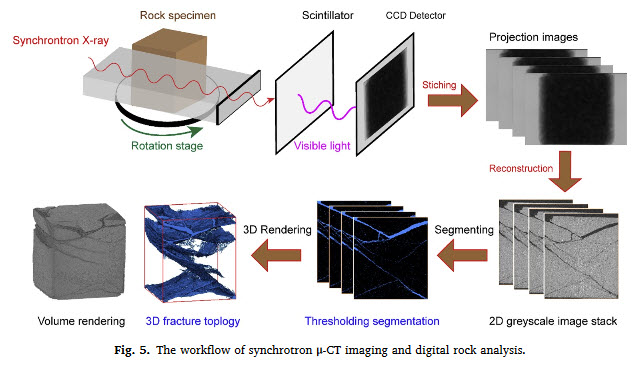
Dynamic strength and failure modes of sandstone under biaxial compression
Geomaterials are increasingly being subjected to the quasi-static confinements and dynamic loadings, and thus it is critical to characterise dynamic behaviour under the coupled static-dynamic loading conditions. In this study, a series of dynamic biaxial compression tests was performed on cubic specimens of sandstone by using a triaxial Hopkinson bar system, high-speed three-dimensional digital image correlation (3D-DIC) and synchrotron-based micro-computed-tomography (μCT).
Read more
K. Liua, J. Zhaoa, G. Wua, A. Maksimenkob, A. Haquea, Q.B. Zhang
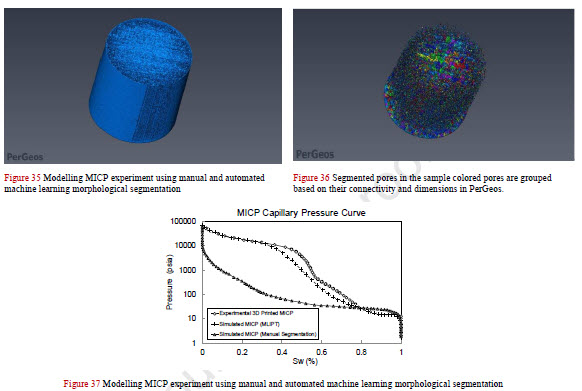
Experimental Investigation of 3D Printed Rock Samples Replicas
Laboratory Experiments on rock specimens are designed for understanding and characterizing subsurface environment, quantifying potential recovery, and tuning fluid flow models in porous media. The spatial variability and reservoirs’ heterogeneities predicate acquiring expensive cores from different locations. These experiments are mechanically and petrophysically destructive and cannot be repeated or extended on the same core. Replicating core samples with 3D-printing technology innovation ... Read more
Ahmed G.Almetwally, H.Jabbari
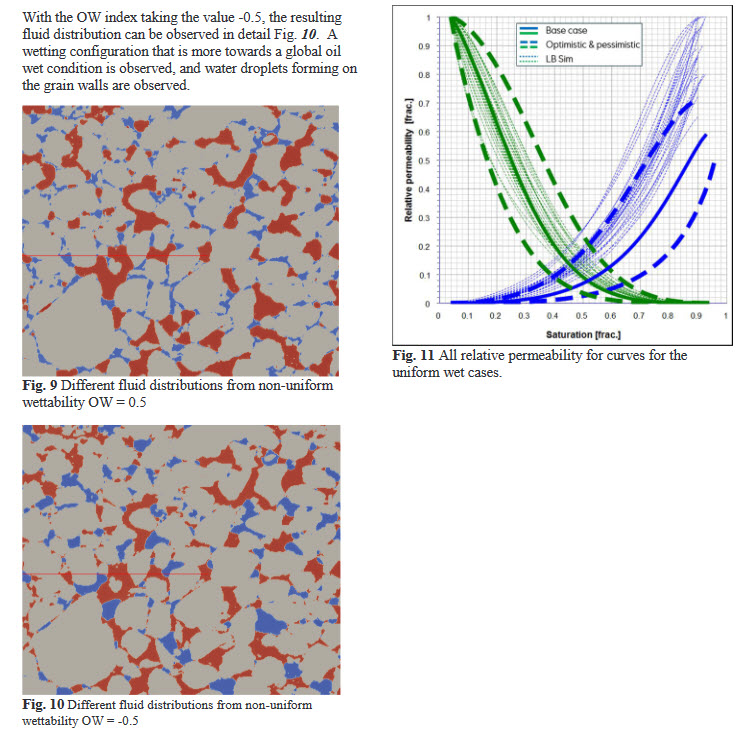
Relative permeability and capillary pressure are key properties within special core analysis and provide crucial information for full field simulation models. These properties are traditionally obtained by multi-phase flow experiments, however pore scale modelling has during the last decade shown to add significant information as well as being less time-consuming to obtain. Pore scale modelling has been performed by using the lattice-Boltzmann method directly on the digital rock models obtain... Read more
ThomasRamstad, Anders Kristoffersen, and EinarEbeltoft
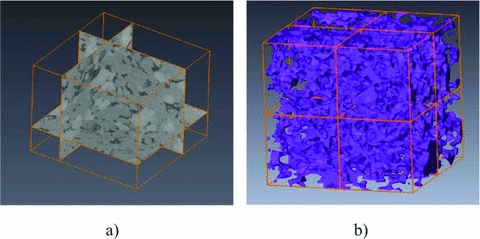
Computational elastic upscaling of sandstone on the basis of X‐ray micro‐tomographic images
Up‐scaling the elastic properties of digitized rock volumes as obtained from X‐ray computer tomography (CT) imaging via computer simulations has the potential to assist and complement laboratory measurements.
This computational up‐scaling approach remains a challenging task as the overall elastic properties are not only dependent on the elastic properties of individual grains but also on the hardly resolvable pore spaces between adjacent grains such as micro‐cracks. We develop ... Read more
Valeriya Shulakova, Marina Pervukhina, Tobias M. Müller, Maxim Lebedev, Sherry Mayo, Susanne Schmid, Pavel Golodoniuc, Osni Bastos De Paula, Michael B. Clennell, Boris Gurevich
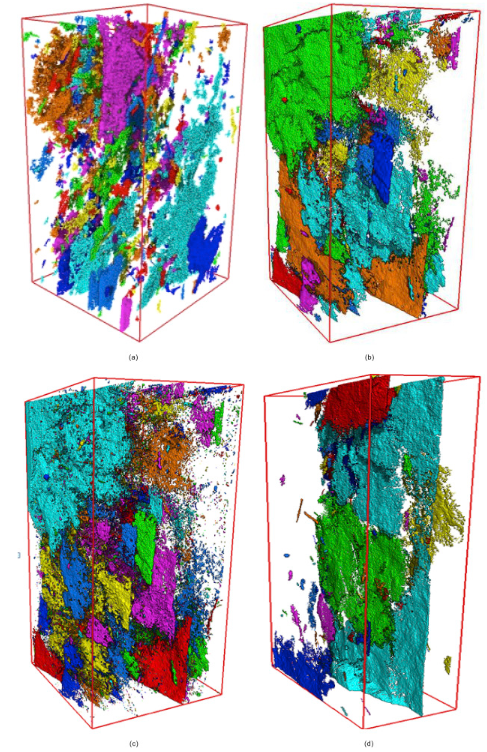
Three-dimensional characterization of micro-fractures in shale reservoir rocks
Fractures are crucial for unconventional hydrocarbon exploitation, but it is difficult to accurately observe the 3D spatial distribution characteristics of fractures. Microtomography (micro-CT) technology makes it possible to observe the 3D structures of fractures at micro-scale. In this study, micron-CT scanning is conducted on multiple mud-shale samples of source rocks in the Permian Lucaogou Formation, Junggar Basin. The Avizo software is applied to process and segment the micron-CT images... Read more
Chao Qi, Xiaoqi Wang, Wei Wang, Jie Liu, Jincai Tuo, Keyu Liu
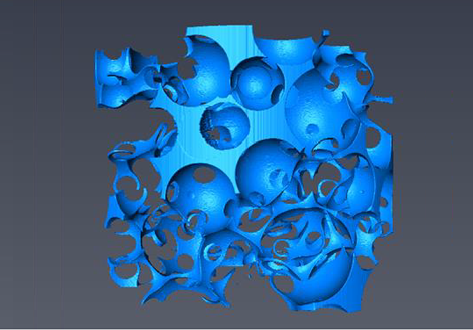
In this study, we examined the relationship between capillary pressure, saturation, and interfacial area for a three-phase flow system. Using x-ray microtomography we were able to capture high-resolution three-dimensional images of the flow system, from which the saturation, interfacial area, and capillary pressure were determined.
Multi-phase flow in porous media includes many instances of subsurface flow. Three-phase flow in particular is important in situations of enhanced oil recov... Read more
Rebecca Paustian

Accurate monitoring of multiphase displacement processes is essential for the development, validation and benchmarking of numerical models used for reservoir simulation and for asset characterization.
Here we demonstrate the first application of a chemically-selective 3D magnetic resonance imaging (MRI) technique which provides high-temporal resolution, quantitative, spatially resolved information of oil and water saturations during a dynamic imbibition core flood experiment in an Esta... Read more
N. P. Ramskill, A. J. Sederman, M. D. Mantle, M. Appel, H. de Jong, L. F. Gladden
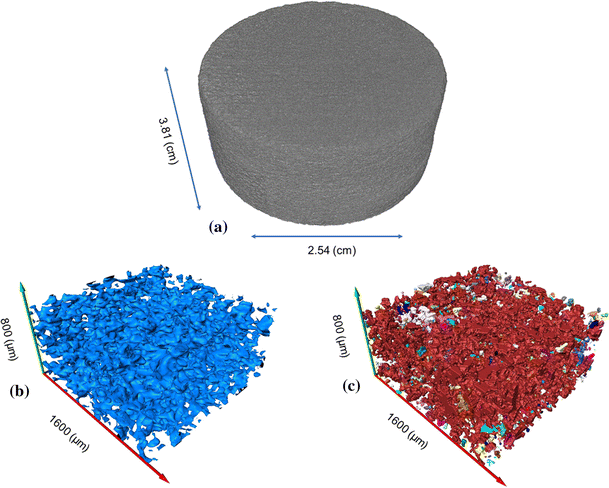
Pore characterization of 3D-printed gypsum rocks: a comprehensive approach
With advancements in additive manufacturing, now 3D-printed core plugs can be duplicated in order to replace natural rock samples. This can help us to control their parameters to be used in different types of experiments for model verifications.
However, prior to such substitutions, we should ensure they can represent natural rock samples through characterizing their physical properties. In this paper, synthetic samples made up of gypsum powder are 3D-printed and then characterized for... Read more
Lingyun Kong, Mehdi Ostadhassan, Chunxiao Li, Naser Tamimi
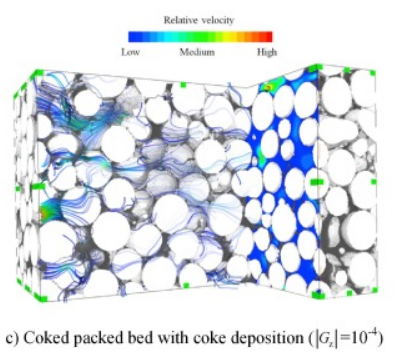
Coke deposition during crude oil in-situ combustion (ISC) is an important phenomenon that significantly impacts the pore topology and permeability.
In this study, X-ray computed microtomography and a specific image processing procedure were used to reconstruct the micro-tomographic images of packed beds with coke deposition. From the reconstructed images, the microstructural parameters related to the transport were analyzed, such as the effective porosity, the constrictivity and the ge... Read more
Qianghui Xu, Wei Long, Hang Jiang, Bin Ma, Cheng Zan, Desheng Ma, Lin Shi